Styrofoam, a common packaging material, poses a significant environmental challenge due to its non-biodegradable nature. This article delves into the question, “Is Styrofoam recyclable?” exploring various facets of Styrofoam recycling, its challenges, and potential solutions.
What Is Styrofoam?
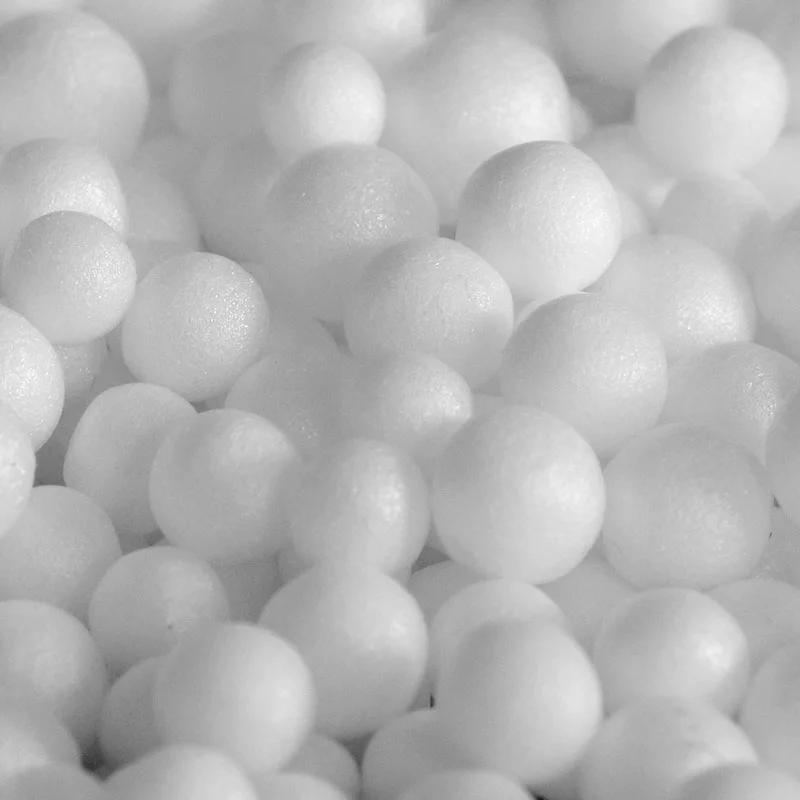
Styrofoam, technically known as expanded polystyrene (EPS), is a lightweight plastic material composed of 98% air and 2% polystyrene. It’s commonly used in packaging, insulation, and food containers due to its excellent thermal insulation properties.
Composition of Styrofoam
Styrofoam consists of small beads of polystyrene, which are expanded and fused together to form the final product. Its lightweight nature makes it an ideal choice for packaging fragile items, but its environmental impact is a growing concern.
Is Styrofoam Recyclable?
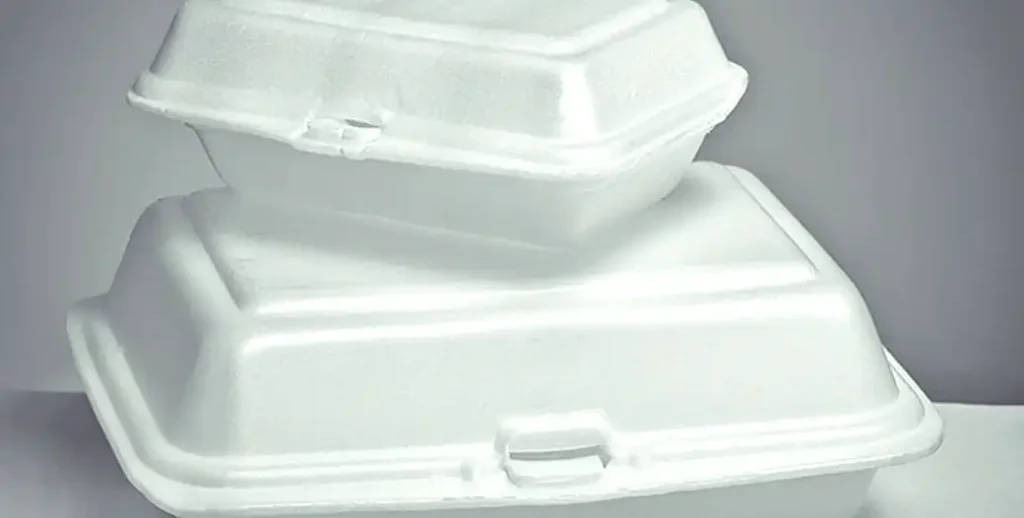
Yes, Styrofoam is recyclable, but the process presents several challenges due to its unique properties and economic factors. While some recycling facilities accept Styrofoam, many are not equipped to handle it efficiently.
Additionally, Styrofoam is often contaminated with food residue, making it difficult to recycle effectively. Despite these challenges, innovative solutions such as mechanical and chemical recycling techniques are emerging to address the issue of Styrofoam waste.
However, widespread recycling efforts and investment in recycling infrastructure are needed to tackle the environmental impact of Styrofoam effectively.
Is Styrofoam Recyclable or Garbage
Styrofoam garbage or recycling?
Styrofoam can be either recyclable or treated as garbage, depending on local recycling capabilities and policies. In areas where recycling facilities accept Styrofoam, it can be recycled.
However, in regions without proper recycling infrastructure or where Styrofoam recycling is not economically viable, it may be disposed of as garbage. Efforts are underway to promote Styrofoam recycling and develop innovative solutions to manage Styrofoam waste more sustainably.
Why is Styrofoam Non Recyclable
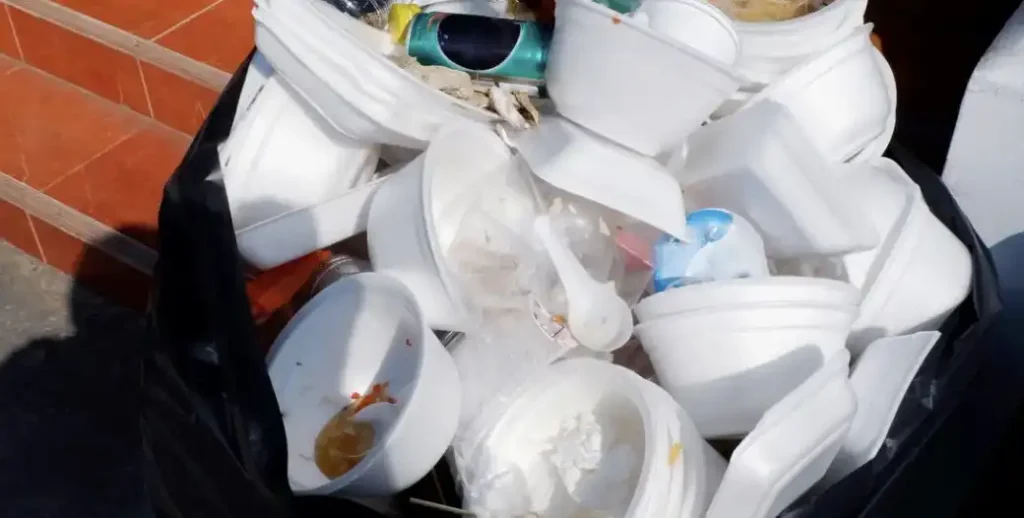
Styrofoam, technically known as expanded polystyrene (EPS), presents challenges for recycling due to several factors:
- Lack of Infrastructure: Many recycling facilities are not equipped to handle Styrofoam due to its lightweight and bulky nature. This limits recycling options and often leads to Styrofoam being disposed of in landfills.
- Contamination Issues: Styrofoam is difficult to clean and often contaminated with food residue, making it challenging to recycle effectively. Contamination reduces the quality of recycled material and can lead to rejection by recycling facilities.
- Economic Viability: Recycling Styrofoam is often not economically viable due to low demand for recycled material and high transportation costs. This economic factor discourages investment in Styrofoam recycling infrastructure.
- Limited Market for Recycled Styrofoam: Even if Styrofoam is recycled, there may be a limited market for the recycled material, further reducing the economic incentive for recycling.
These factors contribute to the classification of Styrofoam as non-recyclable in many areas, highlighting the need for innovative solutions to address Styrofoam waste effectively.
What Dissolves Styrofoam?
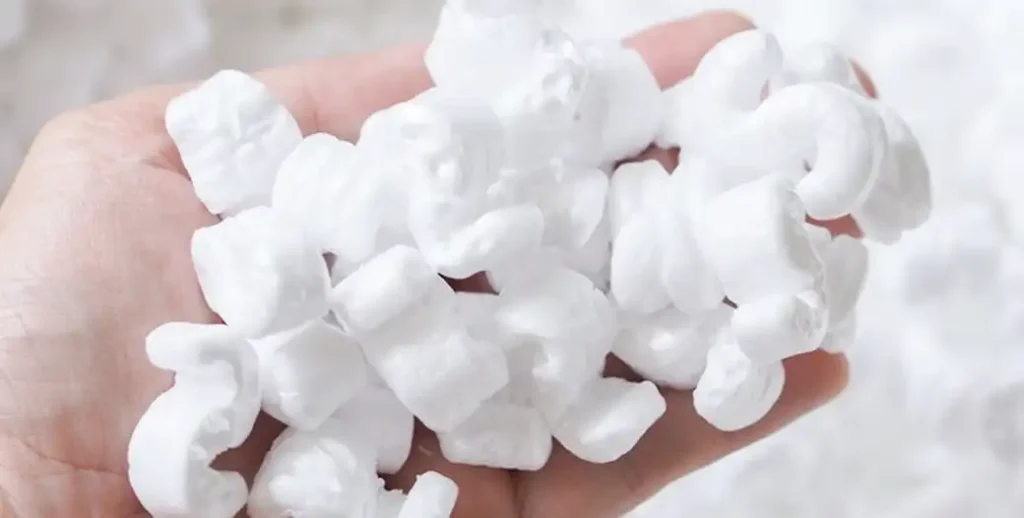
Styrofoam, also known as expanded polystyrene (EPS), is resistant to many common solvents due to its non-polar nature and closed-cell structure. However, there are certain substances that can dissolve or degrade Styrofoam:
Acetone:
Acetone is a powerful solvent that can dissolve Styrofoam on contact. It breaks down the polystyrene molecules, causing the foam to disintegrate into a sticky residue. However, it’s important to handle acetone with caution due to its flammability and toxicity.
Hydrocarbons:
Certain hydrocarbon-based solvents, such as gasoline, mineral spirits, and paint thinner, can dissolve Styrofoam to some extent. These solvents penetrate the foam’s structure and weaken its bonds, causing it to break apart or soften.
D-limonene:
D-limonene is a natural solvent derived from citrus fruits that has been found to dissolve Styrofoam effectively. It breaks down the foam’s structure without causing harm to the environment.
Other Chemicals:
Some industrial chemicals, such as benzene and toluene, are capable of dissolving Styrofoam. However, these substances are highly toxic and pose serious health risks, so they should be handled with extreme caution and only used in controlled environments by trained professionals.
While these substances can dissolve Styrofoam, it’s important to note that they may also release harmful fumes and pose environmental hazards. Therefore, proper safety precautions should be taken when handling and disposing of Styrofoam and any substances used to dissolve it. Additionally, efforts should be made to minimize the use of Styrofoam and explore alternative materials that are more environmentally friendly.
Where to Take Styrofoam for Recycling
To recycle Styrofoam, you can check with your local recycling facility or waste management department to see if they accept it.
Some recycling centers offer drop-off locations specifically for Styrofoam, while others may host special collection events for Styrofoam recycling.
Additionally, certain retail stores or packaging companies may participate in Styrofoam recycling programs. It’s essential to inquire about the specific guidelines and requirements for Styrofoam recycling in your area to ensure proper disposal and minimize environmental impact.
Challenges in Styrofoam Recycling
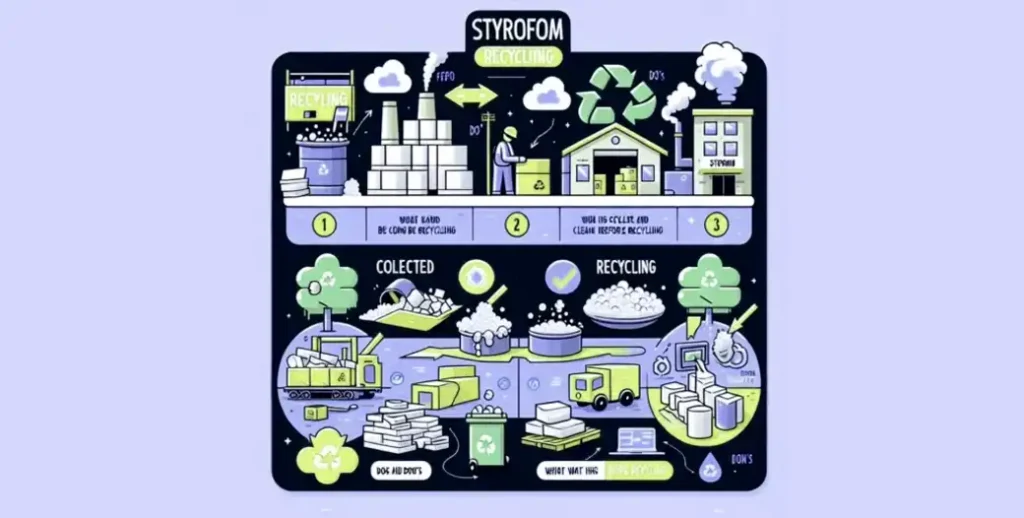
Challenges in Styrofoam recycling stem from several factors:
Lack of Infrastructure: Many recycling facilities lack the necessary equipment to efficiently handle Styrofoam due to its lightweight and bulky nature. This deficiency limits the recycling options available and often results in Styrofoam being disposed of in landfills.
Contamination Issues: Styrofoam is challenging to clean thoroughly and is often contaminated with food residue or other substances. This contamination reduces the quality of the recycled material and can lead to rejection by recycling facilities.
Economic Viability: Recycling Styrofoam is often not economically feasible due to low demand for recycled material and high transportation costs. The lack of economic incentive discourages investment in Styrofoam recycling infrastructure.
Limited Market for Recycled Styrofoam: Even if Styrofoam is successfully recycled, there may be a limited market for the recycled material. This limited demand further diminishes the economic viability of Styrofoam recycling efforts.
Addressing these challenges requires innovative solutions, increased awareness, and investment in recycling infrastructure to improve Styrofoam recycling rates and reduce its environmental impact.
Innovative Recycling Solutions:
Despite challenges, innovative solutions are emerging to address the issue of Styrofoam waste and promote recycling.
Mechanical Recycling:
Mechanical recycling involves breaking down Styrofoam into smaller pellets, which can then be used to manufacture new products such as picture frames, crown molding, and decking materials.
Chemical Recycling:
Chemical recycling processes break down Styrofoam into its chemical components, allowing for the production of new polymers or fuels. These innovative techniques offer potential solutions to Styrofoam waste management.
Foam Densifiers:
Foam densifiers compress Styrofoam into dense blocks, reducing its volume for easier transportation and storage. These machines play a crucial role in facilitating Styrofoam recycling efforts.
Sustainable Alternatives to Styrofoam:
In response to environmental concerns, various sustainable alternatives to Styrofoam are gaining popularity.
Biodegradable Packaging Materials:
Biodegradable packaging materials, such as molded pulp and cornstarch-based packaging, offer eco-friendly alternatives to Styrofoam. These materials decompose naturally, reducing environmental impact.
Reusable Containers:
Switching to reusable containers and packaging reduces reliance on single-use Styrofoam products, minimizing waste and promoting sustainability.
Eco-Friendly Insulation:
Alternative insulation materials, such as recycled denim and cellulose insulation, provide energy-efficient and environmentally friendly alternatives to Styrofoam insulation.
FAQs
Can all types of Styrofoam be recycled?
Not all types of Styrofoam are recyclable. Expanded polystyrene (EPS) is commonly accepted for recycling, while other types may not be.
How to Recycle Styrofoam Blocks?
Styrofoam blocks can typically be recycled at specialized recycling facilities or drop-off locations. It’s essential to ensure that the blocks are clean and free from any contaminants before recycling. Check with your local recycling center for specific instructions on how to recycle Styrofoam blocks in your area.
How to Recycle Styrofoam Boxes?
Styrofoam boxes, commonly used for packaging and shipping, can often be recycled at designated drop-off locations or recycling centers. Before recycling, make sure to remove any labels or tape from the boxes and clean them thoroughly to prevent contamination
How to Recycle Styrofoam Containers?
Styrofoam containers, such as those used for takeout food or food packaging, can be recycled at some recycling facilities. Ensure that the containers are clean and free from any food residue before recycling. Check with your local recycling center for specific instructions on recycling Styrofoam containers.
How to Recycle Styrofoam Coolers?
Styrofoam coolers, often used for transporting perishable items, can sometimes be recycled at specialized recycling facilities. Before recycling, remove any non-recyclable components such as metal hinges or plastic handles. Check with your local recycling center for guidance on recycling Styrofoam coolers.
How to Recycle Styrofoam Cups?
Styrofoam cups can be recycled at certain recycling centers or drop-off locations. Before recycling, ensure that the cups are clean and free from any liquid or food residue. Remove any lids or straws before recycling. Check with your local recycling center for specific instructions on recycling Styrofoam cups.
How to Recycle Styrofoam Egg Cartons?
Styrofoam egg cartons can often be recycled at certain recycling centers or drop-off locations. Before recycling, ensure that the egg cartons are clean and free from any egg residue. Check with your local recycling center for specific instructions on recycling Styrofoam egg cartons.
How to Recycle Styrofoam Food Containers?
Styrofoam food containers, such as those used for takeout food or food packaging, can be recycled at some recycling facilities. Ensure that the containers are clean and free from any food residue before recycling. Check with your local recycling center for specific instructions on recycling Styrofoam food containers.
Conclusion
In conclusion, while Styrofoam recycling presents challenges, innovative solutions and sustainable alternatives offer hope for addressing the environmental impact of Styrofoam. By raising awareness, promoting recycling efforts, and embracing eco-friendly alternatives, we can work towards a more sustainable future.
